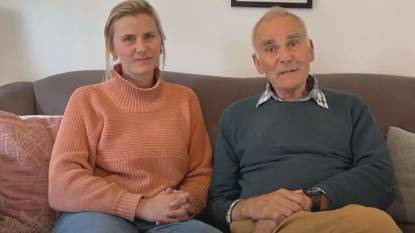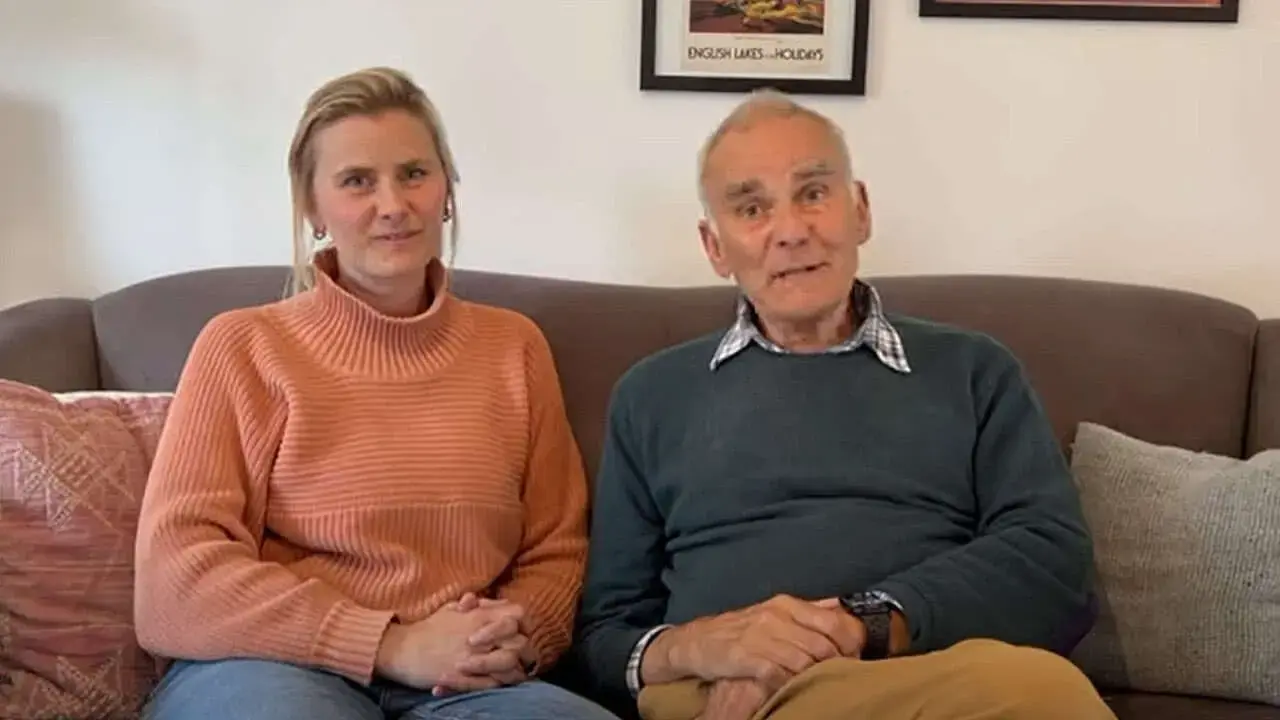
John Brierley: Camino Guidebook Author Biography, Obituary and Inspiration
Posted: | Updated:
Reading time: 22 minutes
John Brierley: Camino Guidebook Author Biography, Obituary and Inspiration
Posted: | Updated:
Reading time: 22 minutes
By: Simon Kemp, Editor
Not just a Camino guidebook author, as this biography and obituary will show, John Brierley was a chartered surveyor, a spiritual seeker, and a bestselling author of guidebooks to the pilgrim routes to Santiago de Compostela in Spain. He passed away in 2023 after a battle with cancer, leaving behind a legacy of generosity, inspiration, and wisdom for millions of pilgrims who followed his footsteps.
Early Life and Transformation
John was born in Wolverhampton, England, in 1948, but moved to Ireland with his family when he was young. He attended St Columba’s College in Dublin and became a successful surveyor, founding his own firm in 1971. He married Jill Hollwey in 1977, they had three children.
John was born on April 2nd, 1948. The second of four children. His father was a managing director for a car manufacturer and his mother was a housewife. He grew up in a modest home and attended the local Catholic school, where he excelled in English and history. He loved reading books, especially adventure stories and travelogues. He dreamed of seeing the world beyond his hometown.
After graduating college , John became a chartered surveyor and founded his own firm, Brierley & Co.
The Camino Discovery
John’s journey to the Camino began in his late 30s, when he felt that his successful career as a chartered surveyor lacked meaning and purpose. He sold his family home and embarked on a travelling adventure with his wife Jill and their three children in a camper van. During this trip, he discovered the Camino de Santiago and felt a strong attraction to the concept of pilgrimage. He decided to walk the Camino Francés, the most popular route from France across the Pyrenees and onward to Santiago, but first he had to make some radical changes to his life.
He resigned from his firm and moved with his family to live in the Findhorn Foundation spiritual community in Moray, in the north of Scotland. There, he immersed himself in meditation, yoga and gardening, and explored different aspects of spirituality and personal growth. Two years later, he fulfilled his ambition to walk the Camino Francés. This proved to be a life-changing experience that opened his eyes, heart and mind to a new way of living and being
The Birth of a Camino Guidebook
John found that walking long distances on pilgrimage could be a time for personal reflection, renewal, and change. He also found that there was little information available about the Camino and its history, culture, and spirituality. He felt inspired to write a guidebook that would not only give practical directions and details of accommodation, but also provide inspiration for what he called “the internal, spiritual journey”. While following his spiritual journey on the Camino, throughout his writings it is not clear if he actually spent a Christmas in Santiago de Compostela .
John’s first guidebook, A Pilgrim’s Guide to the Camino de Santiago: St Jean – Roncesvalles – Santiago (Camino Guides), was published in 2003. It was an instant success and soon became the most widely used guidebook for the Camino Francés, the most popular route to Santiago.
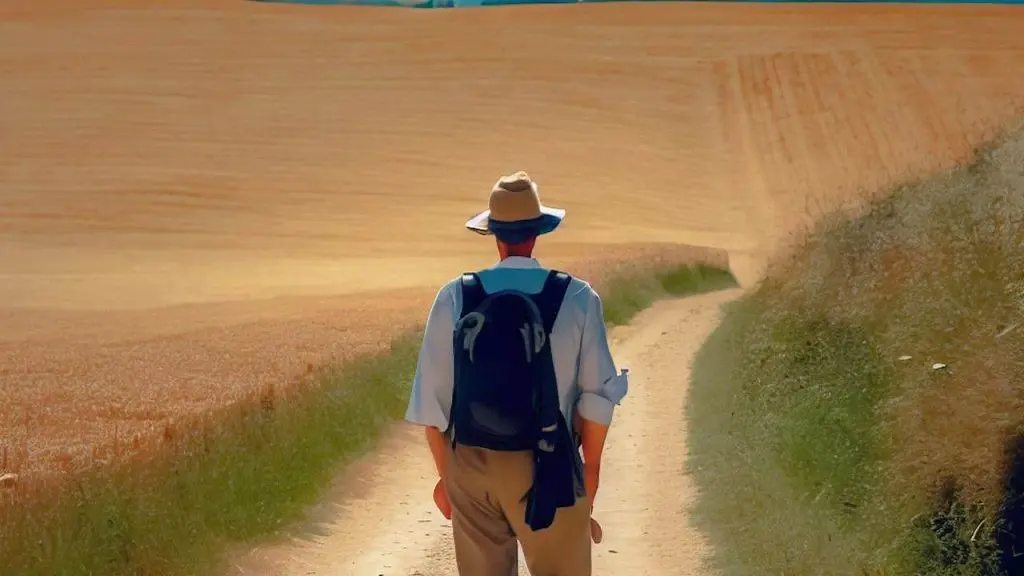
A Pilgrim’s Guide to the Camino de Santiago: St Jean – Roncesvalles – Santiago
The book combines detailed walking directions, maps, accommodation listings, historical and cultural information, and advice on how to prepare for and enjoy the pilgrimage. It also included reflections on what he called “the internal, spiritual journey” that each pilgrim undertakes along the way.
John’s guidebook was not just a practical manual, but also a source of inspiration and encouragement for pilgrims of all backgrounds, beliefs and motivations. He wrote with passion, humour and wisdom, sharing his own experiences, insights and anecdotes. He invited pilgrims to see the Camino as an opportunity for personal transformation, renewal and change. He challenged them to question their assumptions, values and goals, and to discover their true selves and their connection with others and with nature. He also urged them to respect the environment, culture and traditions of the places they visited, and to contribute positively to the Camino community.
If you are looking for a comprehensive guidebook to the Camino de Santiago, you might want to check out this book, it contains all the information you need to walk the sacred Way of St. James, also known as the Camino Frances, the most popular route through Spain.
“A Pilgrim’s Guide to the Camino de Santiago” is a valuable resource for pilgrims. Some of the topics it covers are:
- It includes overview route planners, daily stage maps and detailed town plans to help you plan your journey and find your way.
- It features contour guides to help you understand the terrain and the difficulty of each stage.
- It provides full information on all pilgrim hostels, as well as details for alternative accommodation, such as hotels, guesthouses and campsites.
- It offers helpful spiritual guidelines to support your inner journey as well as the outer pilgrimage, such as reflections, prayers and historical notes.
- It covers the main route from St. Jean Pied de Port to Santiago de Compostela, as well as some offshoots, such as the Finisterre extension and the Aragonese Way.
- It is updated regularly with newer maps and photos, and it is designed to be light and easy to carry.
Following the success of his first guidebook, John wrote several more guides for other Camino routes from Portugal, France and beyond. His guidebooks have sold over one million copies in several languages and have helped countless pilgrims to walk the Camino with confidence, joy and gratitude. Some of his other books include:
A Pilgrim’s Guide to the Camino Portugués: Lisbon – Porto – Santiago / Camino Central – Camino de la Costa – Variante Espiritual & Senda Litoral (Camino Guides)
If you are looking for a comprehensive guide to the Camino Portugués, the ancient pilgrimage route from Lisbon to Santiago de Compostela, you might want to check out John’s book: A Pilgrim’s Guide to the Camino Portugués. This book covers not only the main route, but also several alternative paths, such as the coastal route, the spiritual variant and the littoral path. It provides practical advice, maps, photos, accommodation lists and spiritual guidance for each day’s stage. It also gives historical and cultural insights into the places you will visit along the way. Whether you are a seasoned pilgrim or a first-timer, this book will help you plan and enjoy your journey to Santiago.
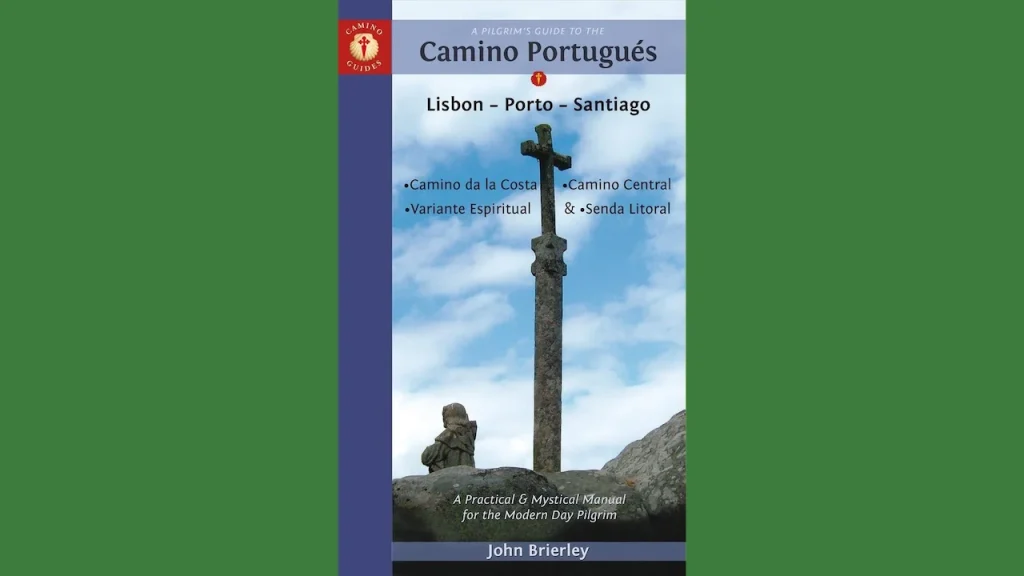
A Pilgrim’s Guide to the Camino Finisterre: Santiago – Finisterre – Muxía (Camino Guides)
If you are looking for a spiritual adventure that will take you to the end of the world, you might want to consider walking the Camino Finisterre. This ancient pilgrimage route starts from Santiago de Compostela, the final destination of the Camino de Santiago, and leads to Finisterre and Muxia, two coastal towns that were once considered the edge of the known world. Along the way, you will discover the beauty and culture of Galicia, a region rich in legends, traditions and gastronomy.
The Camino Finisterre is not as popular or crowded as the Camino de Santiago, but it offers a unique opportunity to extend your journey and reflect on your experience. It is also recognised as a valid pilgrimage by the Church, and you can obtain a certificate of completion if you walk at least 100 km from Finisterre or Muxia back to Santiago.
To help you plan and enjoy your walk, you can use this Brierley guidebook. This book is written in both English and Spanish, and it contains all the information you need, such as maps, photos, accommodation, services, history and spirituality. It also covers the Muxia circuit, an optional extension that adds another 30 km to your journey.
Whether you are a novice or a veteran pilgrim, this book will inspire you to walk this sacred road with an open mind and heart. It will also show you how to balance the practical and mystical aspects of your pilgrimage, and how to connect with the light that lies hidden in your memory.
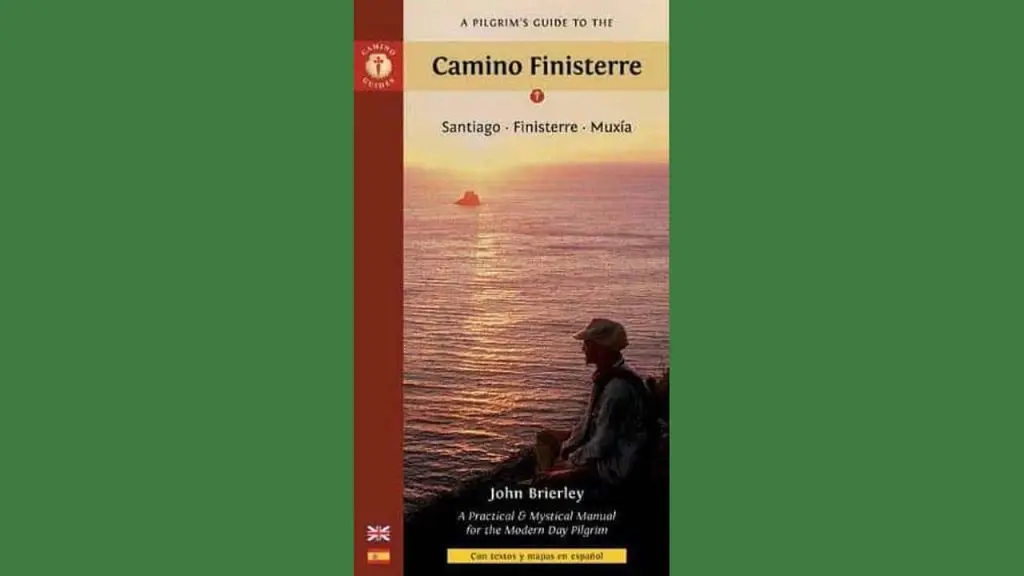
A Pilgrim’s Guide to the Camino Inglés & Celtic Camino: Ferrol – A Coruña – Santiago (Camino Guides)
Are you looking for a different way to experience the Camino de Santiago? Do you want to walk a less crowded route that still offers rich history, stunning scenery and spiritual rewards? If so, you might be interested in the Camino Inglés, also known as the English Way or the Celtic Camino.
The Camino Inglés is one of the oldest routes to Santiago de Compostela, dating back to the medieval period when pilgrims from England, Ireland and Northern Europe arrived by sea to the ports of Ferrol and A Coruña. From there, they followed a network of paths that led them to the tomb of St James the Apostle.
Today, the Camino Inglés is a quiet and peaceful alternative to the more popular routes, such as the Camino Francés or the Camino Portugués. It is also shorter, requiring only about a week to complete, depending on where you start. The minimum distance required to obtain the Compostela certificate is 100 km, which can be achieved by starting in Ferrol or by combining A Coruña with an extra 25 km in your own country.
The Camino Inglés offers a variety of landscapes, from the rugged coastlines and estuaries of Galicia, to the green hills and forests of the interior, to the urban and cultural attractions of Santiago de Compostela. Along the way, you will encounter historical monuments, such as churches, castles and bridges, as well as natural wonders, such as waterfalls, lagoons and beaches. You will also enjoy the hospitality and cuisine of the Galician people, who will welcome you with open arms and delicious dishes.
If you are interested in walking the Camino Inglés, you will need a reliable guidebook that provides you with all the information you need to plan and enjoy your journey. That’s why I recommend this guide.
This guidebook is more than just a practical manual. It is also a mystical companion that helps you connect with your inner self and your spiritual purpose. It contains overview route planners, daily stage maps, detailed town plans, accommodation listings, historical and cultural notes, spiritual guidelines and much more. It also covers the extension to Finisterre and Muxia, for those who wish to continue to the end of the world and beyond.
I have used this guidebook myself and I can attest to its accuracy and usefulness. It is easy to follow, well-organized and beautifully illustrated. It is also lightweight and fits into your pocket for carefree traveling.
If you are looking for a new challenge and a rewarding experience on the Camino de Santiago, I encourage you to give the Camino Inglés a try. And if you do, don’t forget to take A Pilgrim’s Guide to the Camino Inglés & Celtic Camino: Ferrol – A Coruña – Santiago (Camino Guides) by John Brierley with you. You won’t regret it!
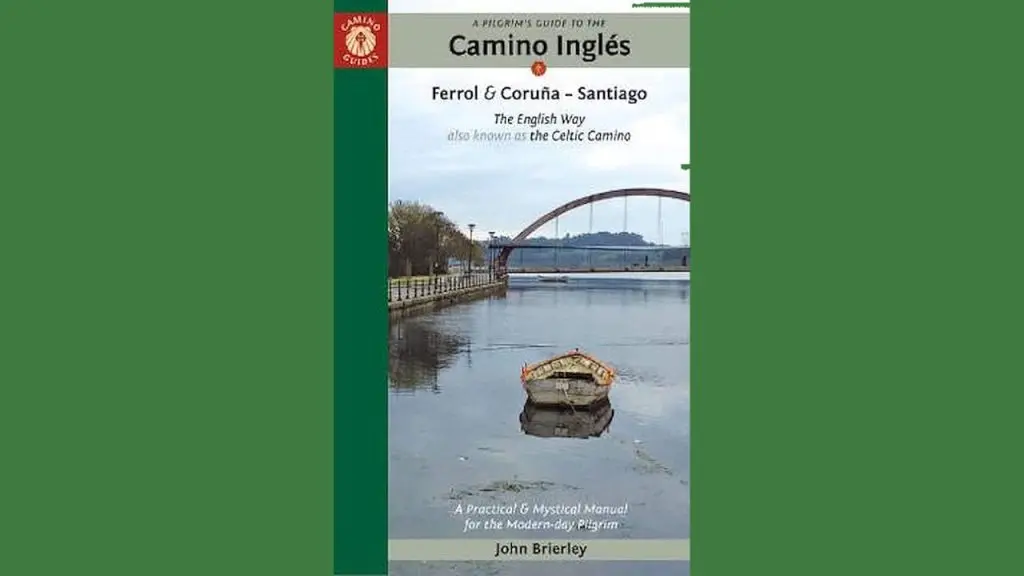
A Pilgrim’s Guide to Via Francigena: Canterbury – Rome Part 1: Canterbury – Besançon (Camino Guides)
If you are looking for a guide to walk the ancient pilgrimage route from Canterbury to Rome, you might be interested in this book. It covers the first 1090 km of the journey, from England through France to Switzerland. It provides detailed maps, elevation profiles, accommodation lists, historical and cultural information, and practical tips for pilgrims. The book is divided into 49 stages, each with an overview, route description, and points of interest.
The book also includes an introduction to the history and spirituality of the Via Francigena, as well as advice on how to prepare and what to pack for the journey. Whether you are planning to walk the whole route or just a section of it, this book will help you experience the beauty and challenges of this ancient way to Rome.
His guidebooks have sold over one million copies in several languages and have helped countless pilgrims find their way physically and spiritually.
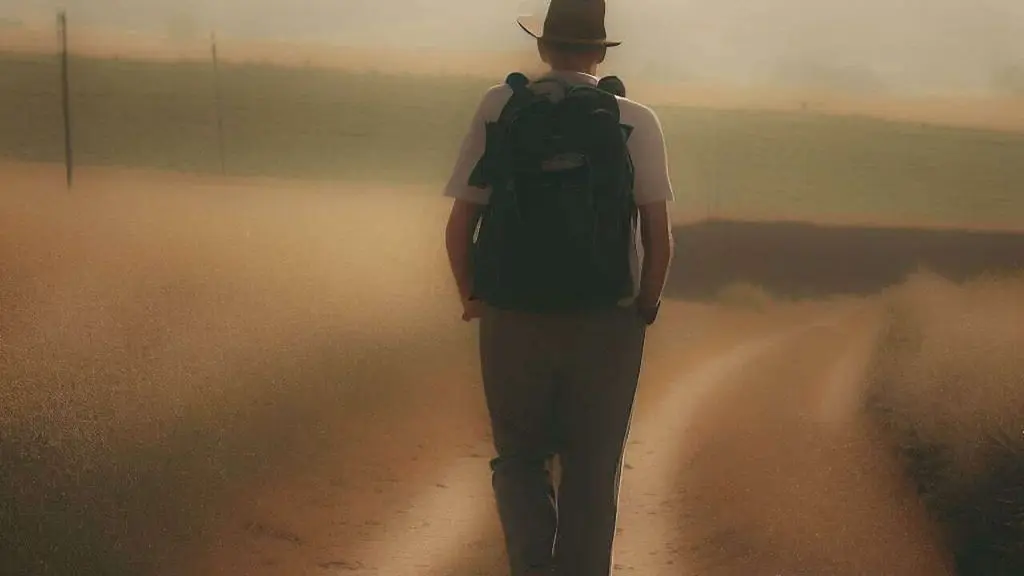
John The Philanthropist
John was not only an author but also a philanthropist who wanted to share his success with his beloved Camino. He made generous donations to many pilgrim causes, such as the Confraternity of Saint James in the UK, the pilgrim hostel in Rabanal del Camino in Spain, the pilgrim hostel in Alpriate in Portugal, and many more. He also supported various environmental and social projects around the world.
John believed that the Camino experience could transform individuals for the better and that they in turn could transform our world. He wrote: “The Camino is not an ending but rather a beginning; it is not an escape from life but rather an entry into life more fully; it is not a retreat from reality but rather an engagement with reality more deeply.”
John’s Passing
John passed away peacefully at his home in Scotland on July 2nd 2023, surrounded by his family and friends. He was 75 years old. He left behind a message for his fellow pilgrims: “This is not a goodbye but instead the beginning of the ultimate pilgrimage home.”
John Brierley was a remarkable man who touched many lives with his words and deeds. He will be remembered as a friend, a mentor, and a guiding light for all those who walk the Camino de Santiago.
Speaking Engagements
Brierley was also an active member of the Camino community. He gave talks and workshops at various events and festivals related to the pilgrimage. He supported many pilgrim associations and projects with generous donations. He also maintained a website and a newsletter where he shared his wisdom and updates on his work.
Confraternity of Saint James London Event 2019
Many people had the privilege of meeting John once at a pilgrim event in London in 2019. It was organised by the Confraternity of Saint James as part of their annual programme of lectures and workshops. John was invited as a guest speaker to share his insights and experiences on the Camino. He talked about how he discovered the Camino during his travels, how he wrote his first guidebook after walking it himself, how he updated his books based on feedback from pilgrims, and how he saw the Camino as a spiritual journey that could help people find their true selves.
John answered questions from the audience and gave advice on how to prepare for the Camino, what to expect along the way, and how to integrate the lessons learned into daily life. He was very humble and gracious, and he signed copies of his guidebook with a personal message: “Buen camino! May you find what you seek on your journey.” His words stayed with many people as they walked their first Camino in subsequent years.
Many stories were shared by other pilgrims who had met him or been helped by him along the way. One told how John had given him a free copy of his guidebook when he saw that he had lost his own. Another told how John had invited him to stay at his home in Scotland when he learned that he had nowhere to go after finishing the Camino. A third told how John had sent him a letter of encouragement when he was going through a difficult time in his life.
The Findhorn Foundation
No biography about John Brierley would be complete without discussing the Finhorn Foundation, the place where he lived most of his life.
The Findhorn Foundation is a Scottish charitable trust that was formed in 1972 by the pioneers of the Findhorn Ecovillage, one of the largest intentional communities in Britain. The Ecovillage is located near the village of Findhorn, on the shores of the Moray Firth, and consists of innovative buildings, beautiful gardens, a wind park, an eco-waste treatment plant, a wholefood café, a shop, and the Universal Hall, a venue for arts and events.
The Foundation runs educational programmes for the Findhorn community and for visitors from all over the world who want to learn from their experience of living in harmony with nature and each other. The programmes range from one-week introductory courses to longer workshops on topics such as permaculture, facilitation, meditation, healing, creativity, and more. The Foundation also hosts conferences, retreats, festivals, and other events that bring together people who share a vision of a more conscious and compassionate world.
The Findhorn Foundation and the Ecovillage are based on three guiding principles: inner listening, co-creation with nature, and work as love in action. Inner listening means tuning in to your own intuition and guidance, as well as to the wisdom of other beings and dimensions. Co-creation with nature means collaborating with the intelligence of nature to create a more connected and respectful relationship with all life forms. Work as love in action means seeing everything you do as an opportunity to express your love and service to yourself and others.
The Foundation and Ecovillage have been recognised by various organisations for their contribution to social and environmental sustainability. They have been awarded UN Habitat Best Practice designation from the United Nations Centre for Human Settlements (HABITAT), and they regularly hold seminars of CIFAL Findhorn, a United Nations Institute for Training and Research (UNITAR), affiliated training centre for Northern Europe. They are also part of the Global Ecovillage Network (GEN) and the International Communal Studies Association (ICSA).
The Findhorn Foundation and the Ecovillage are not just a place to visit, but a way of life that can inspire you to transform yourself and your world. Whether you are looking for personal growth, spiritual awakening, ecological awareness, or social change, you will find something that resonates with you at Findhorn. It is a place where you can discover your true potential and purpose, connect with your inner wisdom and guidance, co-create with nature and other beings, and express your love in action.
Legacy
John was not only an author, but also a pilgrim at heart. He walked the Camino several times over the years, always looking for new routes, experiences and learnings. He loved meeting fellow pilgrims from all over the world and sharing stories, laughter and friendship with them. He was always humble, kind and generous with his time and advice. He was also curious, adventurous and open-minded, always willing to try new things and explore new perspectives. He had a zest for life that was contagious and inspiring.
John’s legacy lives on in his guidebooks, which continue to be updated by his family and collaborators; in his donations, which continue to benefit pilgrims and the Camino; and most importantly, in his spirit, which continues to touch pilgrims who walk the Camino with his books in their hands or hearts.
John also wrote guides for other pilgrimage routes around the world, such as the Kumano Kodo in Japan and the Mount Kailash in Tibet. His guidebooks have sold over one million copies in several languages and have helped countless pilgrims find their way.
John was a true example of what it means to be a pilgrim: someone who walks with faith, hope and love; someone who seeks meaning, purpose and growth; someone who gives back more than he takes; someone who makes a difference in himself and in the world.
Rest in peace, John Brierley. Thank you for your guidance, your generosity and your inspiration. Buen Camino!
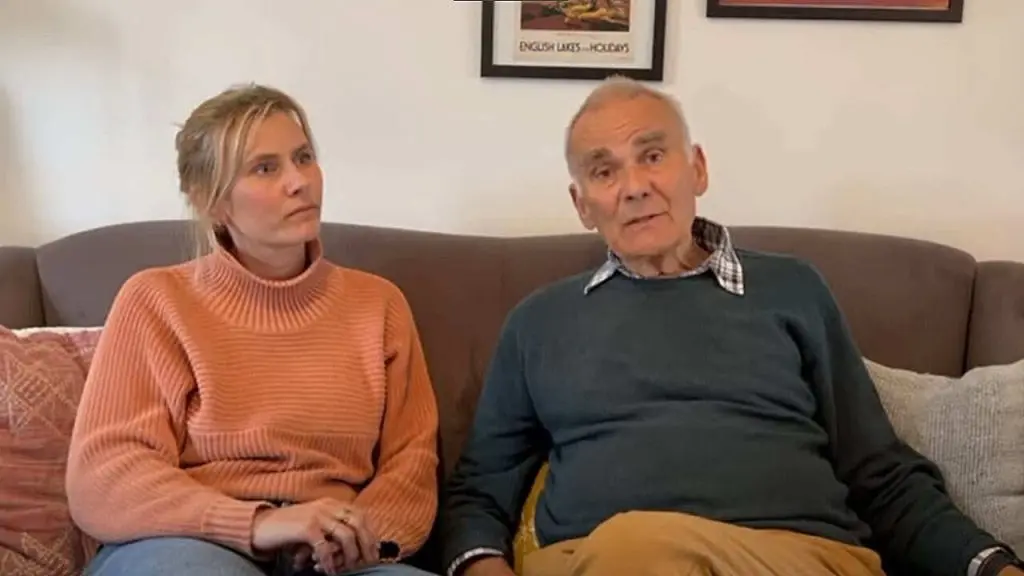
Future of the Camino Guides Video Transcription
It has been a wonderful privilege to have been part of the Camino guides now for 25 years since original Inception since I was inspired from my first pilgrimage to Santiago. In this video we want to give you a view of what happens behind the scenes.
Now I don’t know how I would have coped over the past 25 years in all the work and effort that has gone into producing these guides and bringing them to you. I have a wonderful publisher in Thierry Burglioli of TransPersonal Press originally, who encouraged and supported me in bringing them into existence, but my daughter Gemma here has been now involved with me for over 15 years in maintaining and guiding and improving the guides during that time, and has also been involved in bringing the digital versions of the guides to a wider audience.
They’re now all available in electronic book form and she was also instrumental in bringing the community into existence so as I begin to slow down it seems to me that the guides are beginning to speed up with a wider audience, for people who seem to get a lot from them and so it’s a absolute Delight for me to have Gemma aboard to help nurse them into the next period of their employment.
Well thank you for that Accolade I must say I’m grateful for the opportunity not least to have joined you and been part of this but also that I joined with the technology needed to create them that had sped up itself somewhat those early 15 years of you and a bicycle and a very rudimentary mileage tracker was all before my time but yes it’s been a joy. It’s been a real joy and privilege to work with you and alongside you, gradually more and more as the years have gone by.
It’s lovely to have the opportunity to say hello and to show you that I guess, this this is behind the scenes, as My Father John has mentioned we have the wonderful support of our publisher the printing teams who who get the books created but behind all that, Camino guides was and is a pilgrim on the route becoming inspired to create a guide for pilgrims been joined by another Pilgrim on the route to walk with no idea that she would be becoming part of this project with her with her dad.
And and that’s been really another part of the privilege is to be a pilgrim alongside other pilgrims, and for me if I was to think of what was important to highlight behind the scenes, it would be that that behind the scenes of communal guides is a couple of pilgrims here looking to connect with more pilgrims across the globe, and already that happens a little bit through our website where people will get in touch with us the emails that you’ve always received and and I also enjoy now receiving two from people looking for advice, offering advice and giving us feedback which we so welcome, asking for feedback as they plan their journey.
That collaboration and Community is really at the heart of of what Camino guides does I think and so yes if we were to try and show you a little bit of behind the scenes some of you may be surprised to see it’s no great industry and large offices, a father and his daughter doing our best to to support pilgrims on the route so thank you for watching.
It’s been a great Delight to introduce you to uh my daughter and to meet up with a wonderful worldwide Pilgrim family that we are and we hope this short video is giving you some idea of the what goes on behind the scenes here at Camino guides bless you all
Frequently Asked Questions (FAQ’s)
Who was John Brierley?
John Brierley was born in Wolverhampton, England, in 1948. He was a chartered surveyor who had a successful career in property development. However, he felt dissatisfied with his life and decided to make a radical change. He sold his house, resigned from his firm, and moved with his family to the Findhorn spiritual community in Scotland. There, he discovered his passion for pilgrimage and walked the Camino de Santiago for the first time in 1992.
What motivated John to write guidebooks for the Camino?
John was not only interested in the practical aspects of walking the Camino, but also in its spiritual and emotional dimensions. He believed that the Camino was a transformative journey that could help people find meaning and purpose in their lives. He wanted to share his experience and insights with others who felt called to walk the way of Saint James. He wrote his first guidebook to the Camino Frances, the most popular route from France to Spain, in 2003. It was a comprehensive guide that included maps, directions, accommodation details, historical and cultural information, and spiritual guidance. He later wrote guidebooks to other Camino routes, such as the Camino Portugues, the Camino Finisterre, and the Camino Primitivo.
What made his guidebooks different from others?
John’s guidebooks were not just factual and informative, but also inspirational and personal. He wrote with a warm and friendly tone that encouraged pilgrims to enjoy the journey and to reflect on their inner journey as well. He also included quotes from various spiritual traditions, poems, stories, and anecdotes that enriched the reading experience. His guidebooks were beautifully designed and illustrated with maps, photos, drawings, and symbols. His guidebooks were widely praised by pilgrims and critics alike for their accuracy, clarity, depth, and beauty.
How did he contribute to the Camino community?
John was not only an author, but also a philanthropist and a supporter of many Camino causes. He donated generously to various organizations and projects that helped maintain and improve the Camino infrastructure and services. He also supported pilgrim hostels, associations, publications, events, and initiatives that promoted the Camino culture and spirit. He was an active member of several Camino groups and forums, where he shared his knowledge and advice with fellow pilgrims. He was also a frequent speaker at Camino conferences and festivals around the world.
When did John Brierley die and how is he remembered?
John died of cancer on July 2nd 2023 at his home in Findhorn. He was 75 years old. He is survived by his wife Jill Hollwey and their three children. He is remembered as a beloved guidebook author who touched the lives of millions of pilgrims with his words and deeds. His legacy lives on through his books and through the gratitude and admiration of the Camino community.
What is The Findhorn Foundation spiritual community?
The Findhorn Foundation spiritual community is a centre of transformational learning that was founded in 1962 by Eileen Caddy, Peter Caddy, Dorothy Maclean and others who followed their inner guidance to create a new way of living based on spiritual principles. The community is located in northern Scotland near Inverness and consists of an ecovillage with about 600 residents from more than 40 countries. The community offers workshops, programmes and events that aim to help people connect with their true selves, nature and each other. The community has no formal doctrine or creed but welcomes all expressions of spiritual growth.
